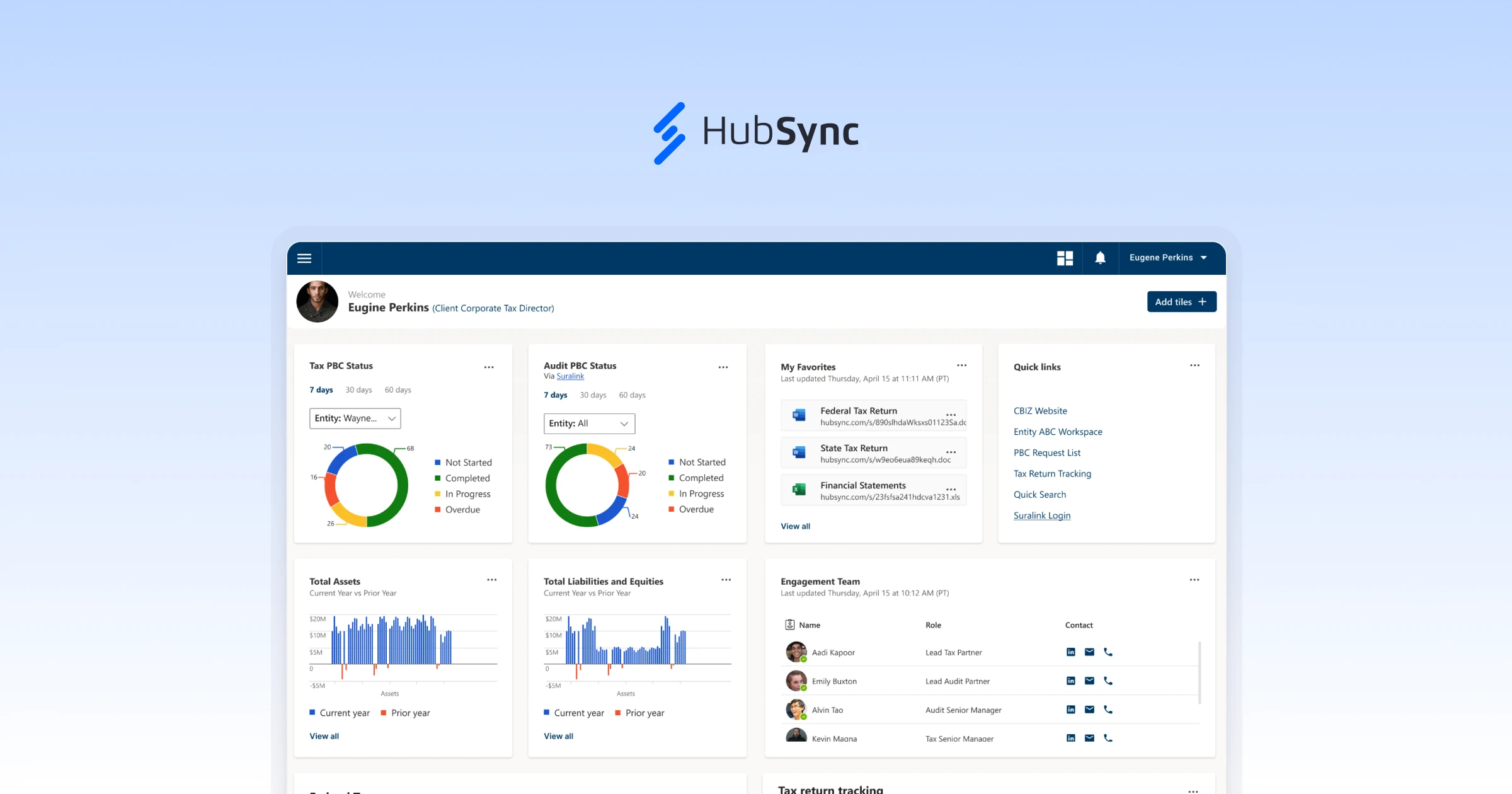
Creating an e-commerce platform that small merchants can actually use
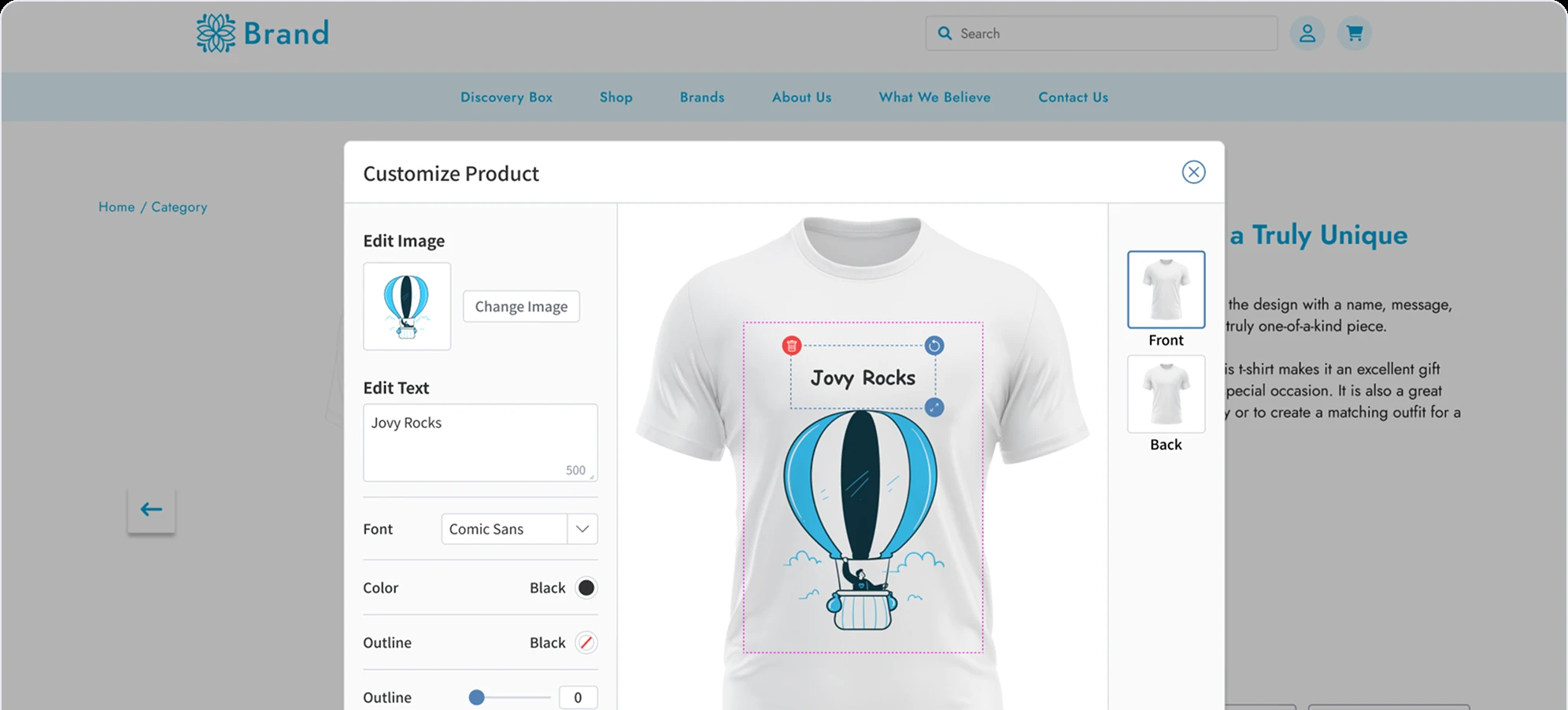

Small online merchants face an impossible choice. Use a basic platform and hit growth ceilings fast. Or adopt enterprise solutions designed for companies with dedicated IT teams and massive budgets. There's nothing in between that scales affordably while remaining genuinely usable.
Jovy saw this gap and built a platform to fill it. Their vision was clear: create comprehensive e-commerce infrastructure that small businesses could set up themselves, customize without developers, and scale as they grow. All the power of enterprise platforms. None of the complexity.
Turning that vision into reality required designing and building an entire platform from scratch.
This wasn't about improving existing features or modernizing legacy interfaces. It was about creating a complete end-to-end e-commerce solution—merchant onboarding, store customization, inventory management, order processing, customer-facing storefronts, payment systems, integrations with QuickBooks and Etsy, product customization tools, and admin dashboards. Every component needed to work seamlessly together while remaining individually accessible to non-technical users.
The challenge was enormous. The timeline was aggressive. And the stakes were high—Jovy needed to launch a platform that could compete with established players while serving an underserved market.
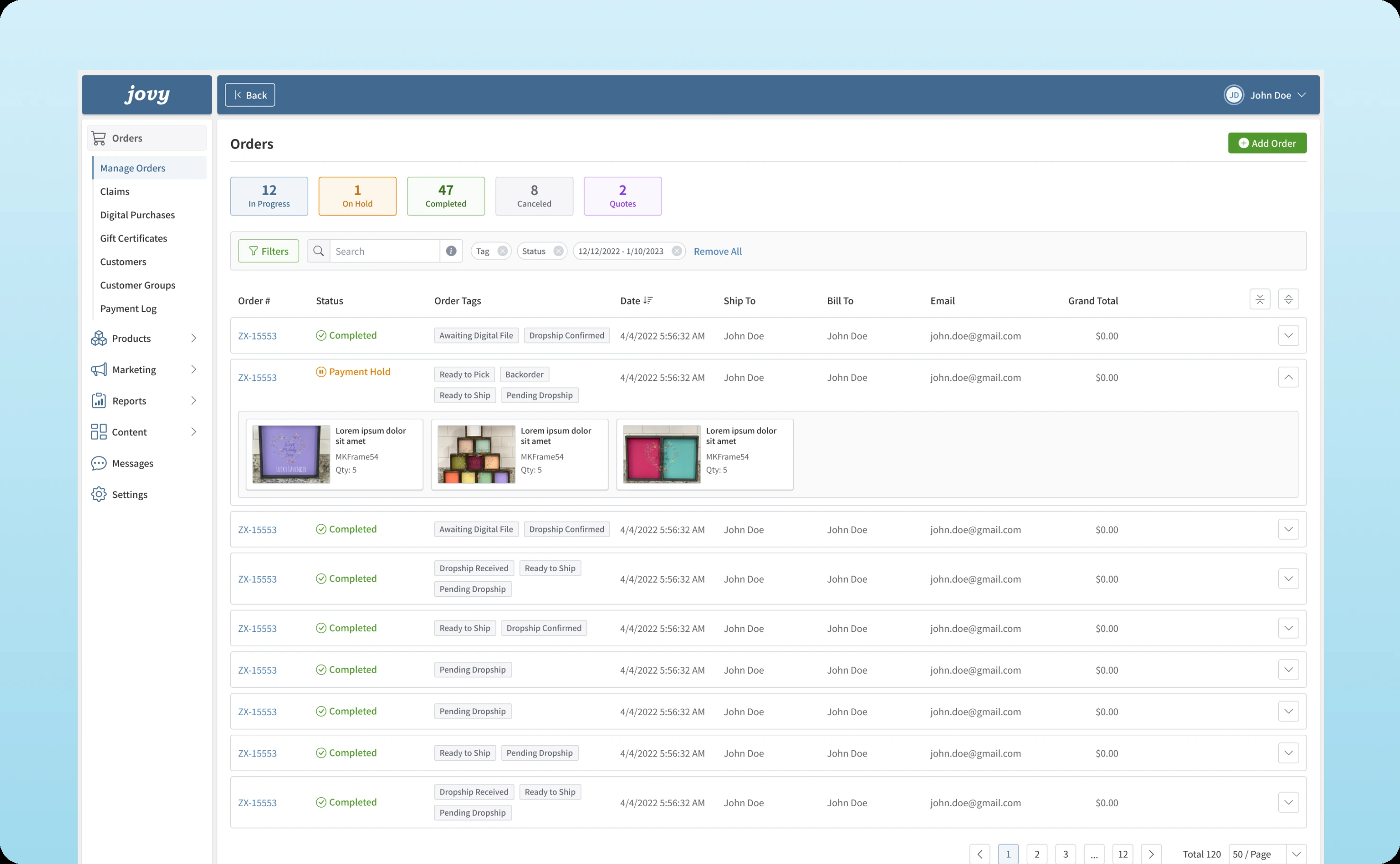
Understanding small merchant realities
Small online merchants operate in fundamentally different contexts than enterprise retailers, yet most e-commerce platforms ignore these differences.
Technical expertise is limited. Small merchants are product experts, not technology experts. They understand their inventory, their customers, and their brand. They don't understand code, APIs, or complex configuration. Platforms that require technical knowledge create adoption barriers.
Time is the scarcest resource. Small merchants wear every hat. They're buyer, marketer, customer service, and accountant simultaneously. Platform setup that takes days or weeks is unacceptable. Every hour spent wrestling with technology is an hour not spent growing the business.
Migration is terrifying. Many merchants have existing stores on other platforms with years of product data, customer information, and order history. Moving that data without breaking everything or losing sales is make-or-break. Platforms that can't handle migration smoothly lose deals before evaluation even begins.
Customization determines competitive advantage. In crowded markets, generic storefronts blend together. Merchants need ability to reflect their brand visually and functionally. But customization tools requiring developers price out small businesses.
Cost predictability matters more than features. Small merchants operate on thin margins. Pricing that scales unpredictably creates financial risk. They'd rather have fewer features with predictable costs than unlimited features with variable pricing.
Through research and iteration, we mapped these realities into design principles that shaped every platform decision.

Starting with the critical moment: merchant onboarding
Platform adoption lives or dies in the first hour. If merchants can't get their store running quickly, they abandon before seeing value.
Onboarding integration
We built a data migration system that handles the terrifying transition from existing platforms.
The onboarding module lets merchants import their entire product catalog through scanning. The system reviews incoming data, highlights inconsistencies, and offers selection options for what to include. AI optimization automatically cleans product descriptions, corrects categorization, and standardizes data formats—eliminating the manual cleanup that typically makes migration painful.
This transforms migration from a multi-day project requiring technical help into a guided process merchants can complete themselves in hours.
Store personalization wizard
With data imported, merchants need to establish brand identity quickly.
The personalization wizard uses imported data and brand information to customize default store templates automatically. Merchants select header styles, footer configurations, and product page layouts through visual options, not code. The wizard matches branding colors, applies consistent typography, and creates cohesive aesthetics without requiring design expertise.
This gives merchants professional-looking stores immediately, not eventually.
Quick setup wizard
The final onboarding phase handles operational essentials—payment processing setup, email configuration, tax calculations, shipping options, and custom domain connection.
Each step includes contextual guidance explaining why it matters and what information is needed. The wizard prevents common mistakes through validation and smart defaults while allowing customization where merchants have specific requirements.
Merchants emerge from onboarding with fully functional stores ready to accept orders, not incomplete configurations requiring additional work.
Empowering merchants through intuitive management tools
Day-to-day store operation needs to feel manageable, not overwhelming.
Order dashboard
We designed the order dashboard as merchant mission control—a single screen showing everything requiring attention.
Active orders surface immediately with status indicators showing where each order sits in the fulfillment process. The interface adapts to different devices seamlessly. Managing orders from mobile while away from desk is as efficient as desktop management.
Backorders, dropshipping arrangements, and urgent orders get visual priority. Merchants can scan the dashboard and know instantly what needs action today versus what's on track.
Specialized order handling
Different order types have different requirements. Dropshipping orders coordinate with suppliers differently than self-fulfilled orders. Digital products deliver immediately without shipping. Custom products require design approval before production.
We built specialized workflows for each scenario while maintaining consistent interaction patterns. Merchants don't relearn the interface for different order types—they follow familiar patterns with appropriate customization.

Integration management
QuickBooks sync keeps financial records accurate automatically. Etsy integration maintains product consistency across platforms without manual duplication. These integrations run invisibly until something needs attention, then surface issues clearly with guidance on resolution.
This eliminates the error-prone manual data entry that plagues merchants using disconnected tools.
Building powerful product management that feels simple
Product catalogs are complex. Variable products have multiple options, different sizes, colors, materials. Kit products bundle multiple items. Digital products deliver files. Gift certificates generate codes. Each product type has unique management requirements.
Variable product handling
We streamlined how merchants handle products with variations. Instead of treating each size/color combination as separate inventory items, the system manages them as variations of one product.
Setup becomes dramatically simpler. Update pricing once, not once per variation. Adjust descriptions in one place. Track inventory by variation automatically. The interface abstracts away complexity while preserving complete control.
Product customizer for customers
Many merchants sell customizable items—t-shirts with printed designs, mugs with photos, caps with embroidered text.
We built a customer-facing customizer that makes personalization effortless. Shoppers upload graphics or add text directly on product previews. The editor keeps designs within safe print areas automatically. Merchants receive order specifications in production-ready formats.
This transforms custom products from manual coordination nightmares into automated workflows.
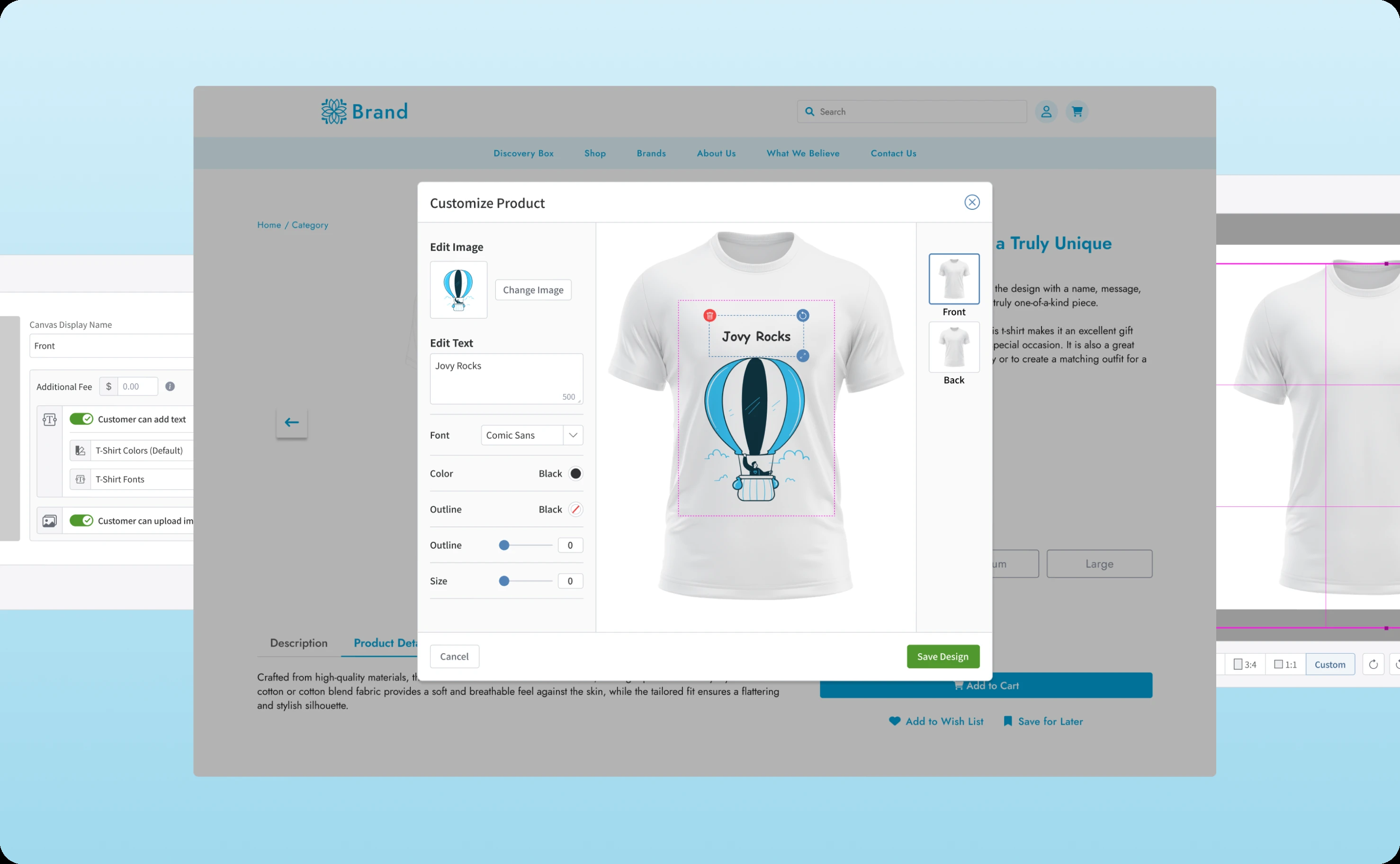
Variable product handling
Backend efficiency means nothing if customers abandon checkouts.
Search and filtering
Product discovery needs to feel intuitive. Customers searching for "blue running shoes size 10" should find exactly that instantly.
We built search that understands natural queries and filtering that supports complex refinement. Results update in real-time as customers adjust parameters. The experience feels like conversation, not database querying.
Cart and checkout optimization
Shopping cart abandonment kills conversion. We designed the cart to build confidence rather than create friction.
The interface clearly shows what's selected, calculates totals transparently, applies discounts visibly, and maintains state across sessions. Checkout supports both registered users and guests with streamlined flows appropriate to each.
Every field asks for information only once. Error states provide constructive guidance, not generic failure messages. The experience drives toward completion, not abandonment.
Product customization interface
For customizable products, the customer interface mirrors the merchant's simplicity.
Upload image. Position on product. Preview result. Add to cart. The entire flow takes seconds while giving customers complete creative control. Complex print specifications happen automatically in the background.
Enabling creative control through page builder
Generic storefronts limit differentiation. Merchants need ability to create unique pages without hiring developers.
We designed a drag-and-drop page builder that makes web design accessible.
Text blocks, images, buttons, product displays, and promotional sections become building blocks. Merchants arrange elements visually, customize colors to match branding, and create professional layouts through direct manipulation.
The builder constrains options enough to prevent aesthetic disasters while allowing sufficient flexibility for true customization. No coding required. No design degree needed. Just intuitive creation tools that respect merchant creativity.
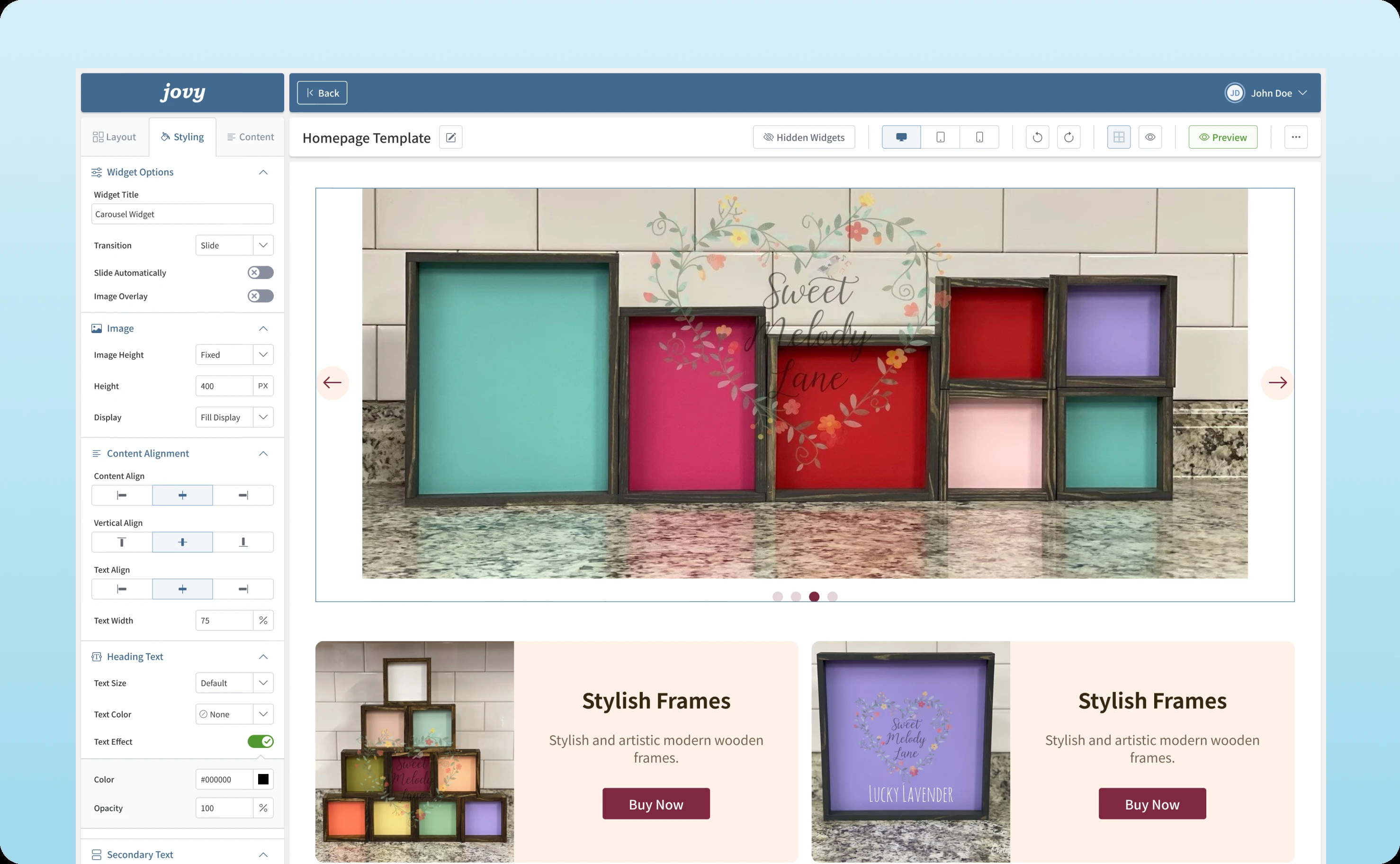
What rapid iteration revealed
Speed defined the project methodology. We tested frequently with real merchants, learned quickly, and adjusted immediately.
Early prototypes revealed assumptions that didn't match reality. Merchants prioritized different features than expected. Workflows that seemed logical in theory created confusion in practice. Navigation patterns that worked for power users frustrated beginners.
Continuous testing and refinement based on actual merchant feedback shaped the final platform. This iterative approach caught problems when they were easy to fix rather than after launch when they'd be expensive to address.
“They have made the process of working with creatives as simple and as seamless as humanly possible.”
John De Marco, Founder at Jovy
The transformation delivered
Jovy launched with a complete platform that genuinely serves small merchant needs.
Setup costs dropped dramatically. Merchants who previously spent weeks and thousands on custom development now launch stores in hours with minimal expense.
Onboarding speed increased significantly. Data migration that used to require technical assistance became self-service. Merchants control their own timelines.
Conversion rates improved measurably. Optimized user flows, mobile-responsive design, and streamlined checkout reduced cart abandonment.
Brand presence strengthened. Customization tools let merchants create distinctive storefronts that reflect their identity rather than looking like template clones.
The platform stands shoulder-to-shoulder with established competitors while serving the specific needs of small merchants that enterprise solutions ignore.
Building platforms that scale with ambition
This project demonstrates that comprehensive platforms don't need to be complex. Power and usability can coexist when design prioritizes user workflows over technical architecture.
The modular approach—building distinct but integrated components for different workflows—allowed sophisticated capabilities while maintaining simplicity in each interaction. Merchants never face the entire platform's complexity, only the specific tools relevant to their current task.
AI-powered optimization in data migration shows how thoughtful automation can eliminate tedious work without removing merchant control. The system handles what computers do best (data cleanup, format standardization) while leaving decisions to merchants.
Jovy proved that underserved markets exist not because they lack needs but because existing solutions ignore their constraints. Small merchants need powerful e-commerce infrastructure. They just need it designed for their reality, not enterprise reality.
The platform makes that possible.
Related case studies

Modernizing Microsoft 365 management for IT administrators
